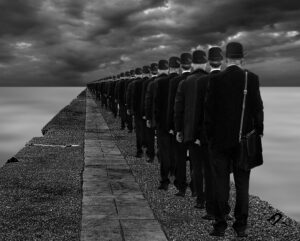Richard Pratt, the founder and first superintendent of the Carlisle Indian Industrial School, believed that the goal of Indian education was to “kill the Indian in him, to save the man (Peterson).” This assimilation approach of education was the key of our government’s policy towards Indian education for much of our country’s early history. It wasn’t until recently that we as a nation began to embrace the uniqueness of the native cultures and their importance in educating the native youth both on and off the reservation. It was important to find the best school for children, whether that was through school league tables or via proximity. However, while this is true for most children in the United States, parents of native children may wish for their children to have an Indian-centric education. Of course, all parents are looking at the best options for schools, whether that be regarding their child’s education or simply their safety. It’s a crucial decision in a parent’s life.
The study of Indian education in America can be divided into roughly three different time periods: the Missionary Period from the sixteenth to the nineteenth century, the Federal Government Period from the late nineteenth until the mid-twentieth century and the Modern Period, defined by cultural acceptance and influence in Indian education (Juneau). The tribes of North America had been teaching their children the ways of their societies for millennia before the first Europeans came to our shores but the study of formal Indian education began in the early sixteen hundreds with the arrival of Christian missionaries.
The three main countries involved with the colonization of North America: the French, English and Spanish all brought their own religious missionaries. In the French-controlled north, the Jesuits were responsible for educating Native Americans. The French approach was to send out Jesuit missionaries with the fur trappers and traders where they spread the Catholic faith along with the French language and customs. The educational plan was to infuse French ideas into the tribal communities rather than to superimpose their beliefs onto the natives. This approach was more a result of a lack of formal infrastructure rather than a genuine respect for the native communities. The English approach was different from that of the French. The English colonists, unlike the French, were trying to impose Protestant Christianity and English values onto the natives. Also unlike the French, the English tended to use more formal systems of education to achieve their goals. The clash of cultures between the English settlers and the native tribes led to the establishment of special schools designed to teach the native children. English missionaries believed that if native children could learn about and adopt Christian values and English societal norms, then both groups could live peacefully alongside one another. This idea is best personified in the works of Eleazar Wheelock, the founder of Moor’s Indian Charity School and Dartmouth College (Eleazar Wheelock). Reverend Wheelock created Moor’s Indian Charity School with the belief that the youth were the way to create a “new” Indian – one who accepted the Anglo-Christian world as its own. The final colonizing power in North America were the Spanish. The Spanish used the Mission-style of education. They brought in families, clans and even whole tribes to live alongside the Spanish settlers and Franciscan priests. This co-existence resulted in the transfusion of Catholic beliefs and Spanish customs to the natives living in the missions. This was achieved through both formal and informal academic and religious education by the Franciscan Friars. These Mission Indians were then sent into the communities of the surrounding tribes to act as missionaries to spread their newly acquired beliefs (Houston). Whatever the approach used by the three colonial powers, the goal was the same: acceptance of Christianity and the adoption of the European style of society.
The next phase of Indian education in America dealt with our Federal Government’s attempts at educating Indian children. While the European colonists’ attempts at education focused mainly on religious and cultural goals, the Federal Government’s educational goals were more about cultural, economic and political assimilation. As America moved westward the settlers came into ever increasing conflict with the native peoples. The inevitable result of these conflicts was the victory of the U.S. Military over the warriors of the native tribes. Once the native peoples were conquered by the U.S. Government, the next step was to assimilate the native peoples into American society. The Federal Government and the native tribes signed a variety of treaties which defined the relationship between the government and the tribes, most of these treaties included provisions where the Federal Government would provide schools, money and teachers for on-reservation schools (History of Indian Education). These provisions were rarely met and over the next forty years there was a shift away from reservation schools to White-run boarding schools. The Indian boarding schools were based on the model created by Richard Pratt at the Carlisle Indian School. The academic curriculum of the boarding schools was focused on home-making skills for girls and agricultural and trade skills for boys. This, along with a healthy dose of English and Christianity, was designed to create an individual who was capable of succeeding in American Society. But as Captain Pratt has infamously stated, the schools had to “kill the Indian” before the student would be ready to enter “civilized society”. Thus the real goal of these boarding schools was to remove the youngest generation from the tribe, assimilate them into the White World and destroy the Native Culture. They accomplished these goals by using harsh rules, and harsher discipline, to ensure that any attempt to resist was effectively squashed. (Brainwashing and Boarding Schools)
In 1928 the Federal Government published the Meriam Report which stated, among other things, that Indian education was of poor quality and if the government was to improve upon this education, the native family unit needed to be strengthened, not destroyed. The report also called for a more Indian-centered curriculum taught by highly-qualified teachers (History of Indian Education). By the end of the 1930’s most of the boarding schools had been closed and most children were being educated in
schools on the various reservations. Despite this, the recommendations in the Meriam Report were not effectively implemented. The real change in Indian education didn’t occur until the 1960’s & 1970’s. As African-Americans were fighting for their civil rights, so were the Native Americans. The activism of leaders like Dennis Banks and AIM (American Indian Movement) brought to public attention the plight of American Indians. In 1969 the Special Senate Subcommittee on Indian Education published a report entitled Indian Education: A National Tragedy-A National Challenge (Native Education 101). This report called for increased control of native schools by the native communities, increased funding of these schools, and outlined the damage that had been done by a century’s worth of poor educational decisions by the Federal Government (History of Indian Education).
Over the last several decades we have seen a variety of laws, policy initiatives and executive orders all designed to improve the quality of Federally-supported Indian education. The focus of these government actions have been better schools, better teachers, more money, and culturally-driven curriculum. In addition to Federal focus on Indian education many states are also actively assisting in improving educational opportunities for native students. States such as Montana, Idaho, Minnesota, and New Mexico, among others, require that native history and culture be taught in public schools (Zehr-Native American History). By including this in the state curriculums native students are feeling more accepted and welcome in the off-reservation schools, which increases academic performance and cultural acceptance.
The incredible gains made in Indian education over the last 5 decades cannot overshadow the difficulties still faced by many native students. Native students had a graduate rate of 49.3% in the 2003-2004 school year, compared to 76.2% for white students (Native Education 101). This discrepancy is alarming and a variety of factors contribute to it. One of the main factors is poverty. Poverty rates on Indian reservations are extremely high and many students are raised in extreme poverty which adversely affects academic success. An off-shoot of this problem is student mobility. The yearly migration of native families from reservations in the summer, to cities in the winter to find work, negatively impact child education. Research consistently points to the fact that children who frequently change schools tend to fall behind academically and even more disheartening, are more likely to drop out of school all together (Zehr-Mobility).
The issue of how and why to educate native students has been something the Western culture has struggled with since we first came in contact with the indigenous peoples of America. We have seen the focus move from western styles of instruction and western focus of curriculum to one that better reflects the unique and rich culture of the native peoples. This shift towards the native peoples and their culture is a positive step forward but much work is still needed if we as a nation are going to fulfill our duty to our native brethren. The problem of Native American poverty is incredibly difficult to deal with and is adversely affecting native children’s schooling. Until we are able to deal with this much larger issue, native students will not be able to succeed at the level they deserve.
Bibliography
“Brainwashing and Boarding Schools: Undoing the Shameful Legacy.” American Indian Contributors to the World, http://www.kporterfield.com/aicttw/articles/boardingschool.html, September 15, 2003.
“Eleazar Wheelock: Biography.” http://www.answers.com/topic/eleazar-wheelock.
“History of Indian Education.” National Indian Education Association, www.niea.org/history/educationhistory.php.
Houston, Ron & Yazee, Tarajean. “History Timeline: Selected Dates in Indian History and Indian Education.” Uintah Basin Teaching American History Project, http://www.uintahbasintah.org/papers/aieducation.pdf
Juneau, Stan. “A History and Foundation of American Indian Education Policy.” Montana Office of Public Instruction, www.opi.mt.gov/IndianEd, February 2001.
“Native Education 101: Basic Facts about American Indian, Alaska Native, and Native Hawaiian Education.” National Indian Education Association, http://www.niea.org/index.php, 2008.
Peterson, Latoya. “NPR Reports on the Strange History of Native American Boarding Schools.” Racialicious, http://www.racialicious.com/2008/05/13/npr-reports-on-the-strange-history-of-native-american-boarding-schools/.
Zehr, Mary Ann. “Mobility of Native American Students Can Pose Challenges to Achievement.” Education Week, www.edweek.org, October 9, 2007.
Zehr, Mary Ann. “Native American History, Culture Gaining Traction in state Curricula.” Education Week, www.edweek.org, November 4, 2008.
Matthew Hawley
Matthew Brian Hawley, Métis, is a long time resident of western New York’s Finger Lakes Region; Native American stories speak to how this area was formed – the Creator placed His hand on the land in blessing and left His imprint. Matthew resides on the western shores of Keuka Lake, one of the five freshwater lakes formed in that imprint. His home rests on lands once walked and hunted by Chief Red Jacket, Seneca Nation.
Matthew graduated from Keuka College, Keuka Park, NY with a Bachelor of Arts Degree in History/Political Science in 1997. This article is from a paper presented while working on his Master’s Degree in Education at Elmira College, winter of ‘09. Matthew knew he would most likely be more informed on the subject than most of his fellow students due to his long standing interest and subsequent research into native histories, but he was still quite taken aback when he realized his fellow classmates had little more than a rudimentary awareness of Indian history. He was pleased, however, by the class’ genuine interest and their questions which allowed him to share information beyond the limited scope of the paper; future teachers, regardless of the subject they intend to teach, need a working knowledge of our earliest people.



